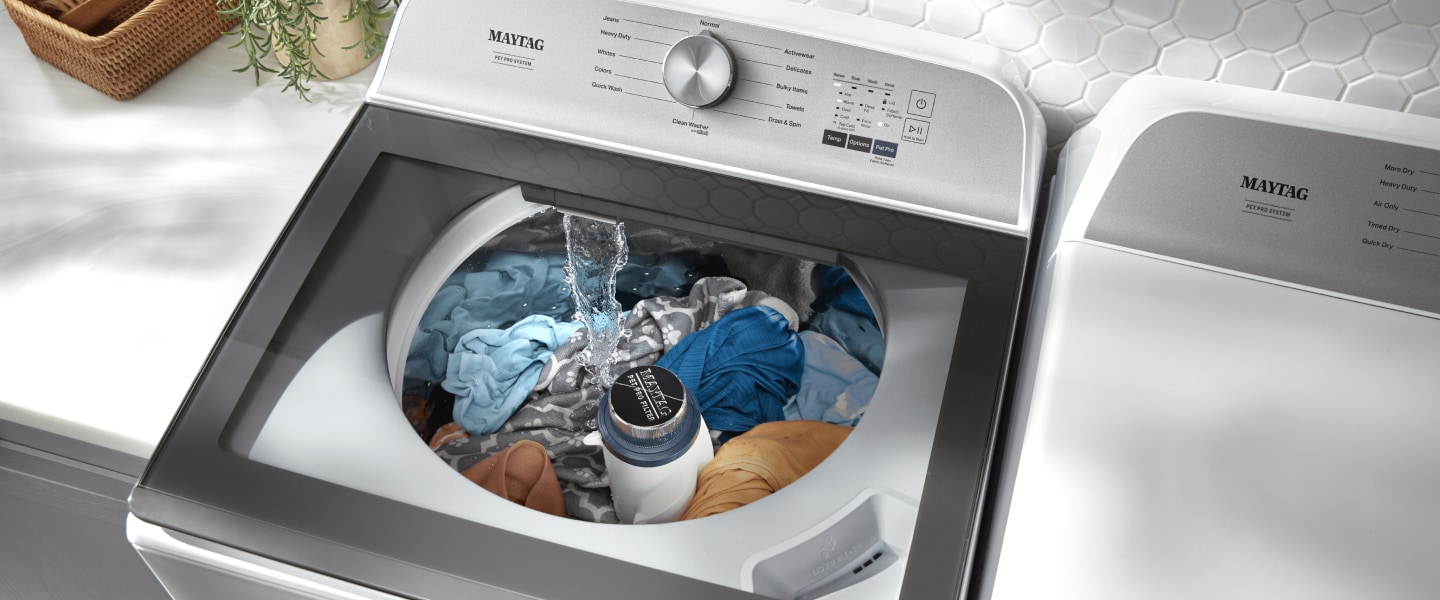
12 THINGS TO LOOK FOR WHEN BUYING A WASHER AND DRYER
Do you need a new washer and dryer? At first look, it may seem like there are endless options, or at least more than the last time you shopped. While you’ll want to keep things like ratings and reviews in mind to determine the best washer option for you, quickly narrow down your search by running through these considerations.
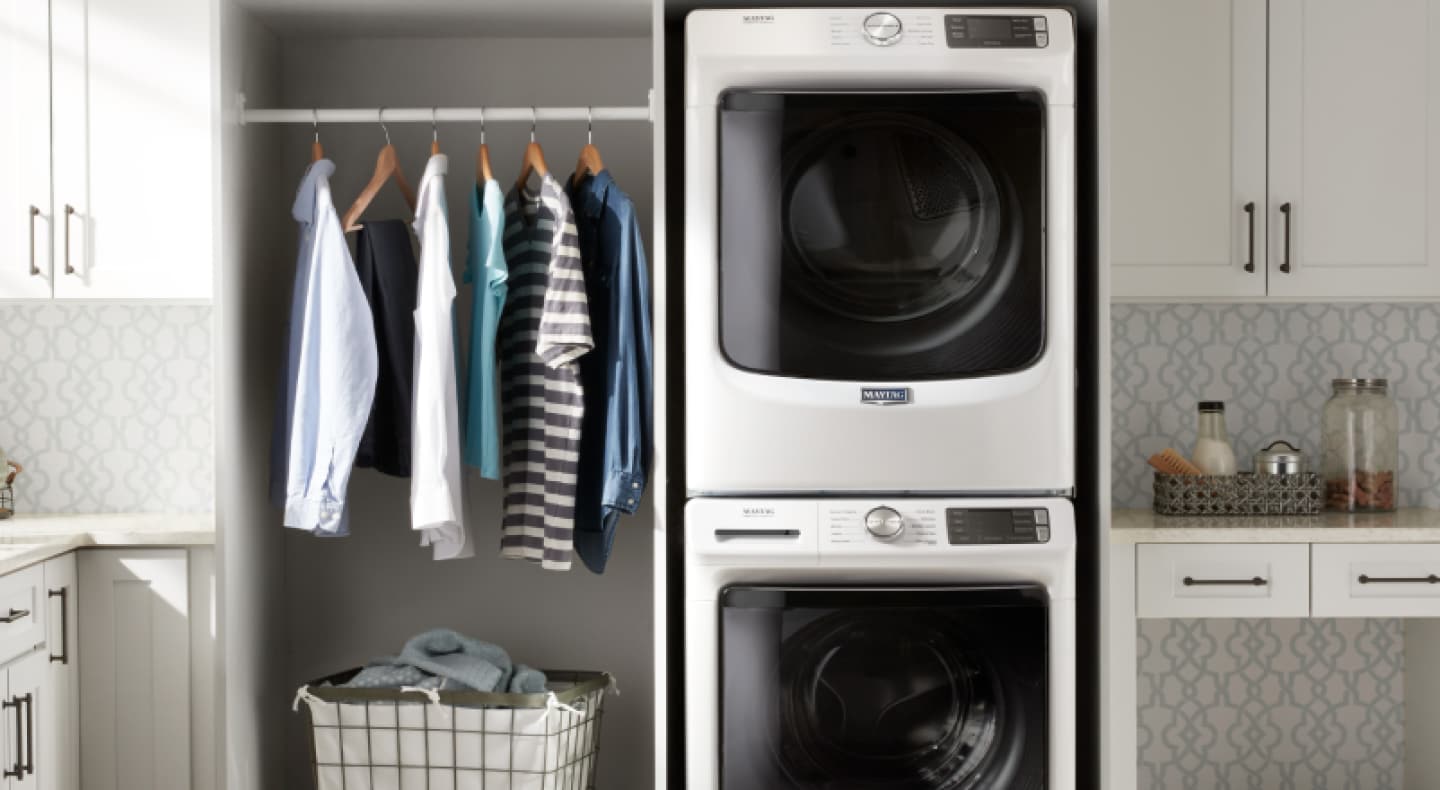
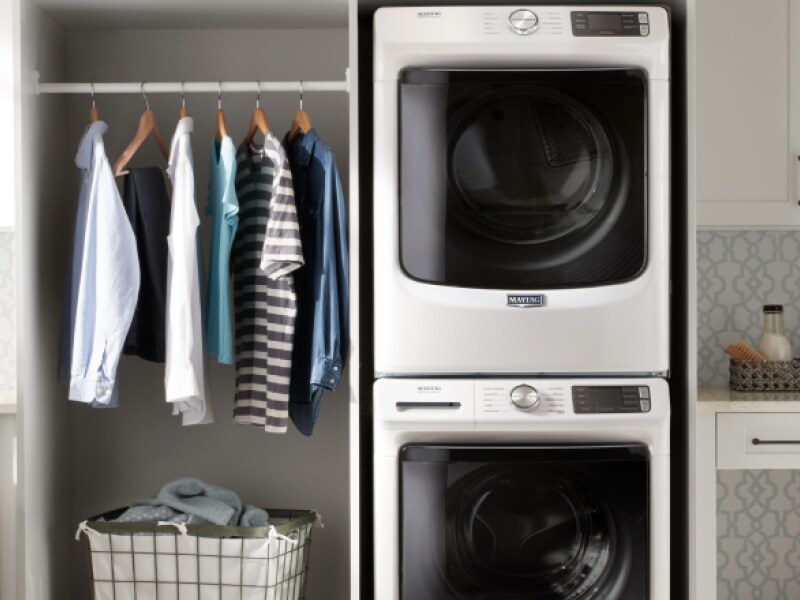
1. THE MOST CONVENIENT LAYOUT
The first step to finding the perfect pair is to pick which washer and dryer configuration works best for your space. Feel free to mix and match washer and dryer models if you can’t find a pre-packaged pair you like. For washers and dryers designed to work together, shop Maytag® laundry pairs. Take the guesswork out of choosing a washer and dryer set with models designed to seamlessly match the way you do laundry.
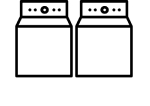
SIDE-BY-SIDE
The most common configuration, this set-up can be achieved with Maytag® top load washers and dryers or front load washers and dryers.
Explore Maytag® washer and dryer sets to best maximize the power of both appliances and find the best fit for your home.
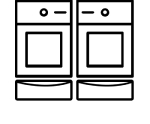
SIDE-BY-SIDE WITH PEDESTALS
Laundry pedestals, like these options from Maytag brand, provide extra storage if your space could use more. They can be added to front load machines to help raise the appliances and make loading and unloading easier. If you’re thinking about adding a pedestal to your dryer, it’s important to consider where the exhaust vent is located in your space so that the venting can be connected properly. Due to the added height, pedestals are not always compatible with every space, especially in small areas like closets.
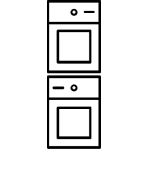
STACKED
A stacked washer and dryer set is great for smaller spaces and can only be achieved with front loading machines, like these models from Maytag brand. Some brands offer stacked combos that can’t be separated called laundry centers or laundry towers.
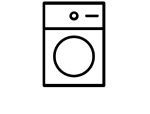
ALL-IN-ONE
When space is at a premium, especially in apartments or condos, an all-in-one washer and dryer is a convenient option. These machines save room and energy by washing and drying clothes in one unit.
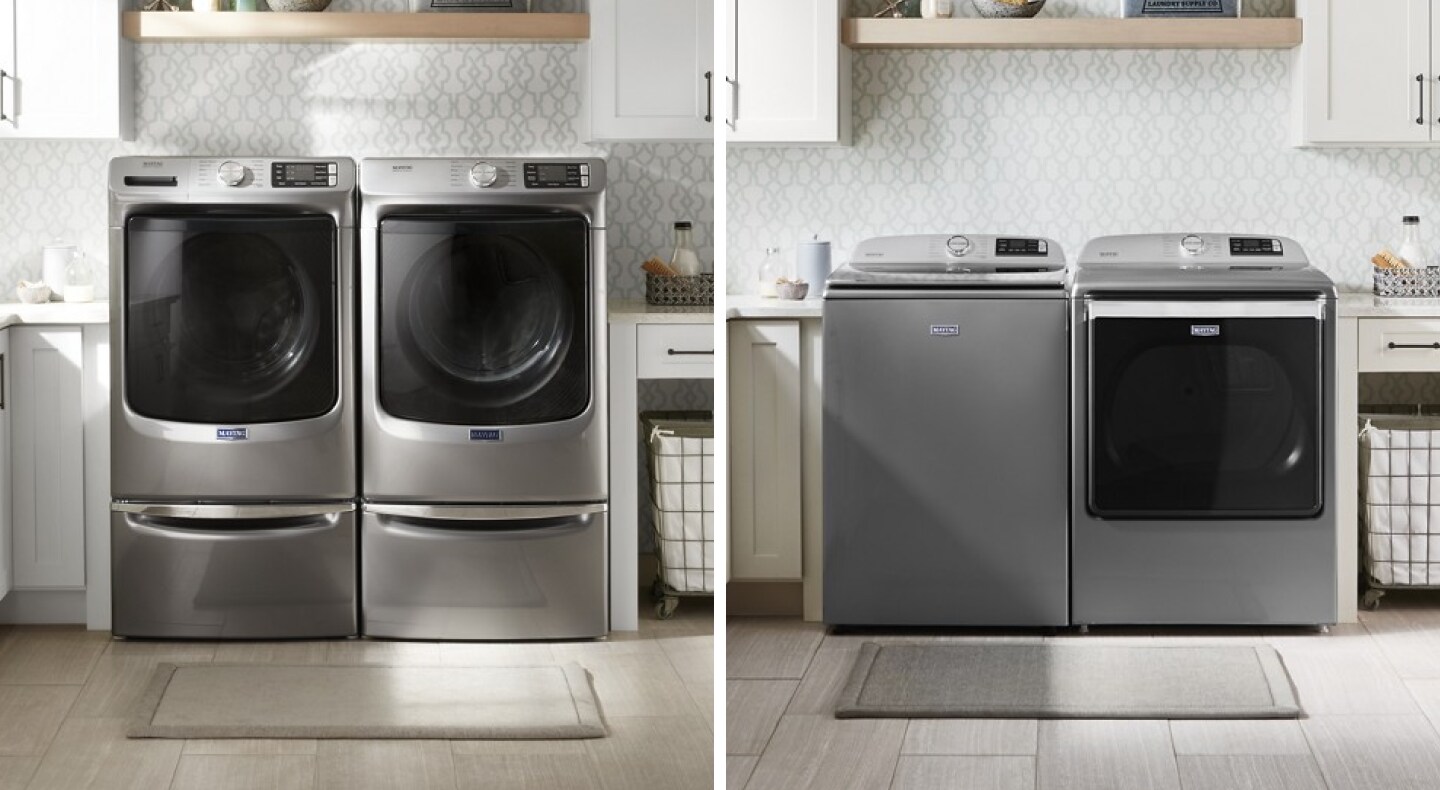
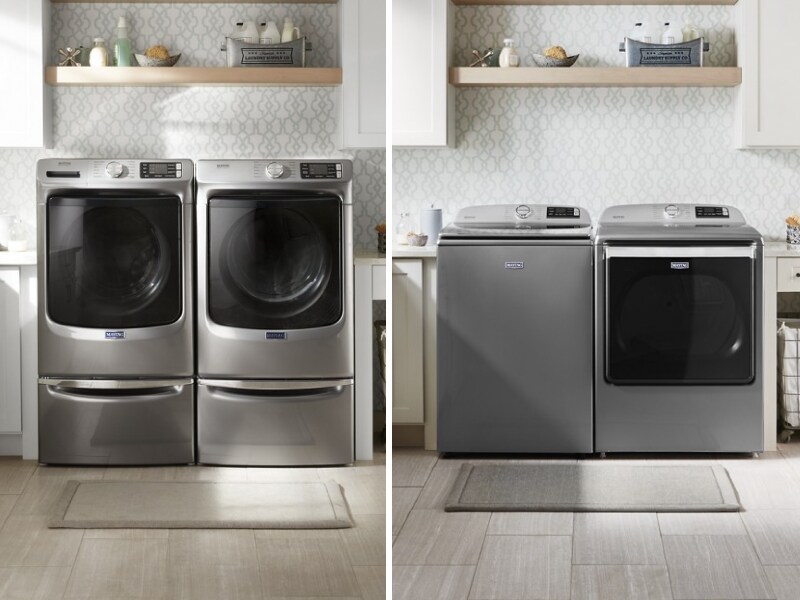
2. FRONT LOAD VS. TOP LOAD
Whether front load or top load is the right laundry configuration for you depends on how you prefer to load your laundry, your wash action preferences and where you want the control panel to be located. Learn more about front and top load machines below.

FRONT LOAD
Front load machines load from the front and have controls in the front. These washers clean clothes by tumbling them, which means they generally use less water and provide gentle cleaning. Front load washers also tend to extract water better and generally take a little longer than top load washers.
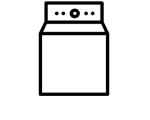
TOP LOAD
Top load machines load from the top with controls in the back. These washers use an agitator or impeller to wash clothes and often have an option that lets you fill the wash basket with deeper water levels.
Learn more about the differences between front and top load washers.
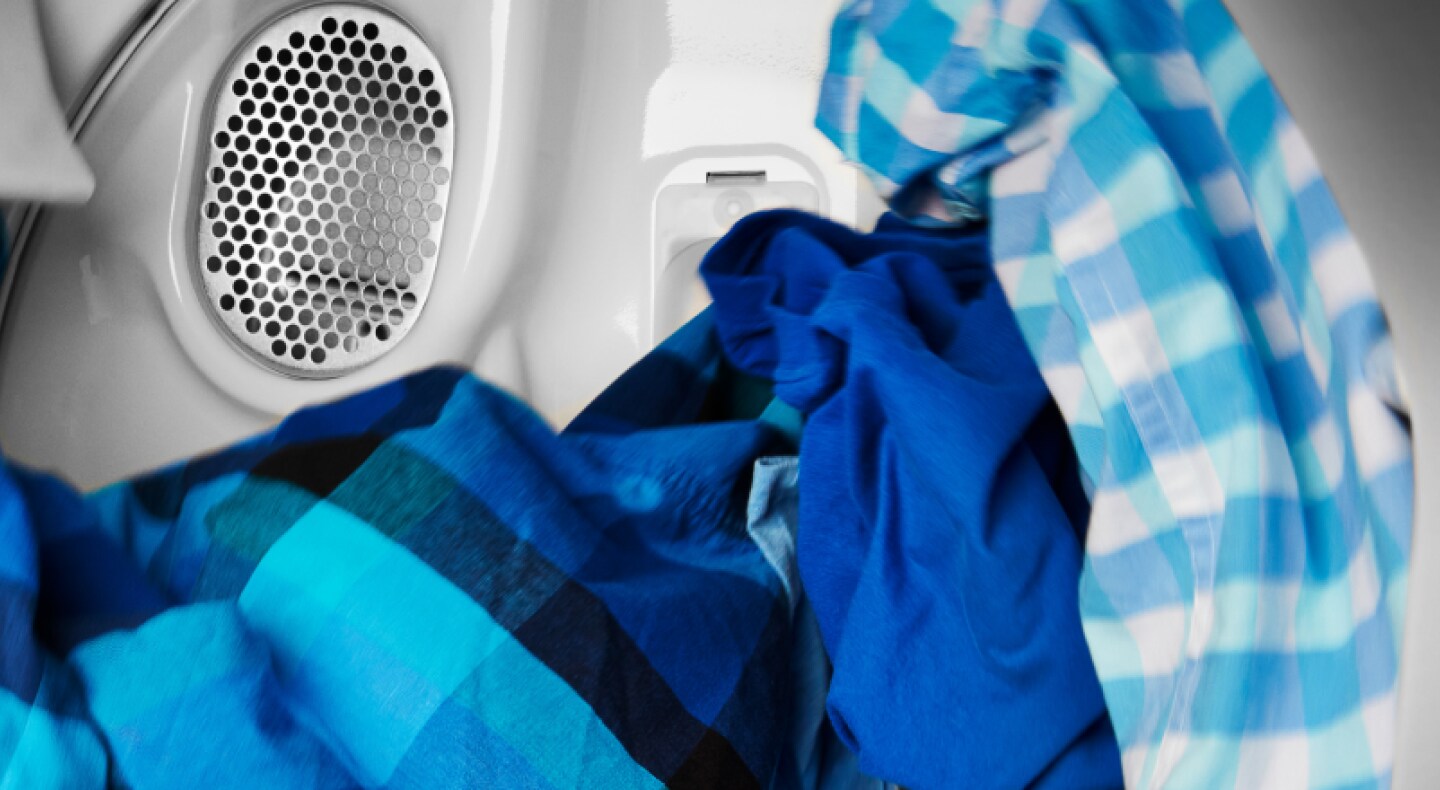
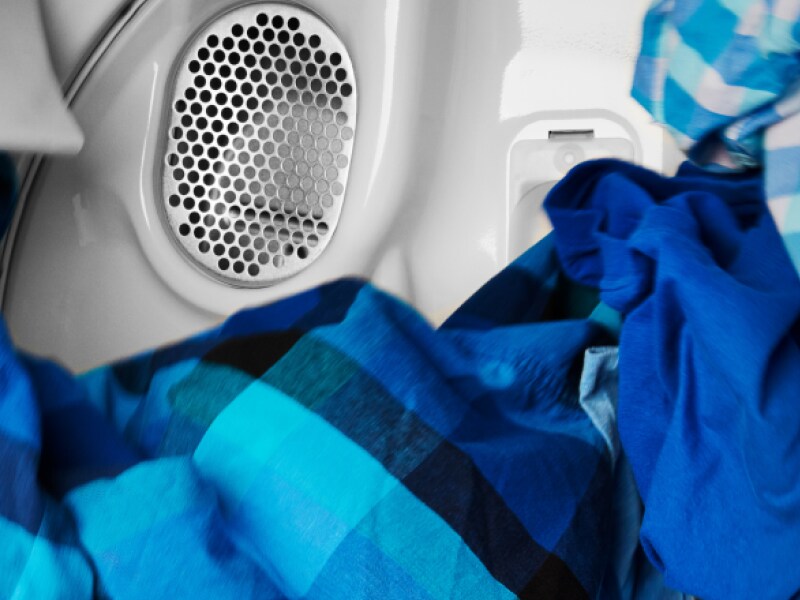
3. SIZE & CAPACITY
Measure your space to filter your options by the right width and height. Common widths are 24" for a small space model and 27–30" for a standard machine. For top load washers, be sure to account for the height when the lid is open, especially under cabinetry, so you’ll have room to open the lid easily. Make sure to get it right with Maytag brand’s step-by-step measuring instructions for washers and dryers.
Also consider the size of your laundry loads and how much washer and dryer capacity you may need. Is your current capacity working for you? Washer capacities range from 2.0 cu. ft. for smaller loads and 6.0 cu. ft. for extra large loads. You should pair large capacity dryers with large capacity washers, making sure that the dryer cubic footage is about 1-½ times larger than the washer capacity.
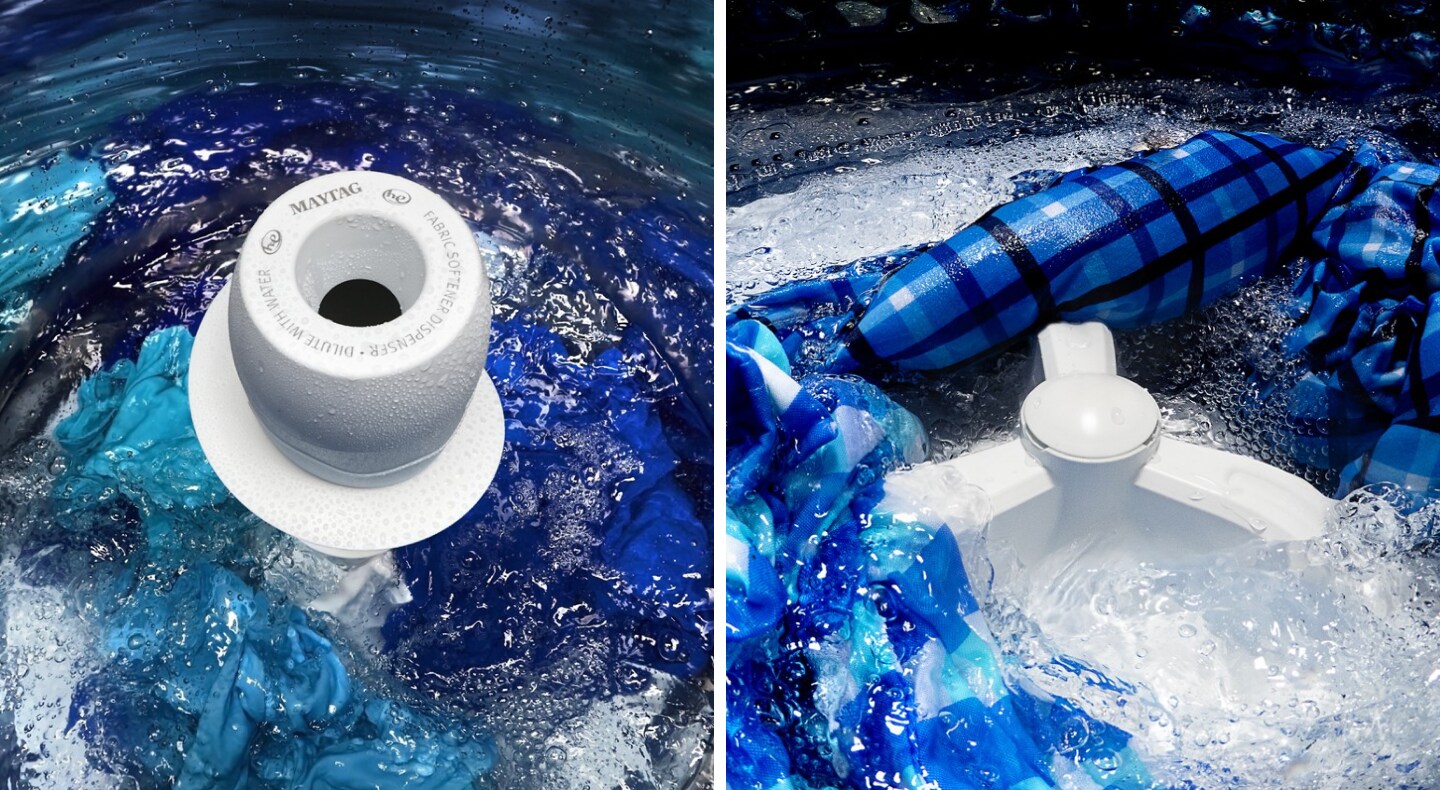
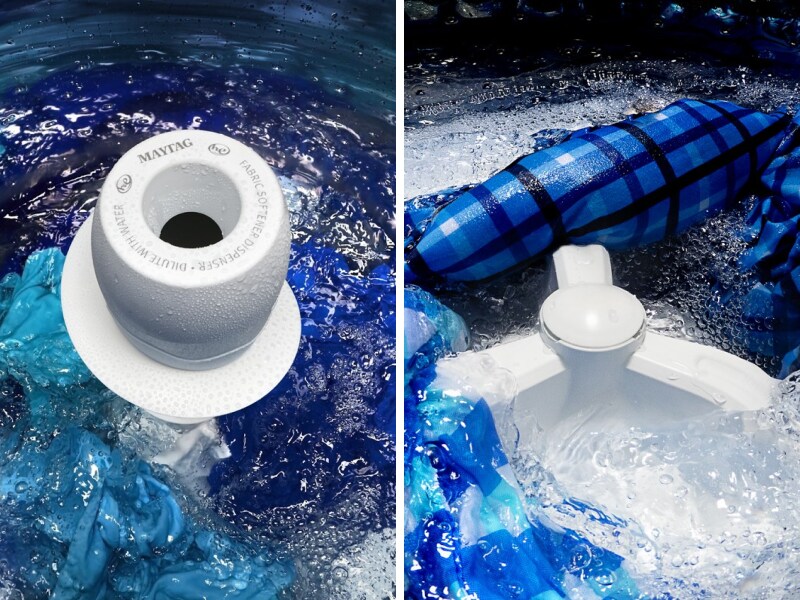
4. AGITATORS VS. IMPELLERS IN TOP LOAD WASHERS
Choosing between agitators and impellers depends on your preferred wash action. Read on to learn more about each option to determine the right fit for you.

AGITATOR WASHERS
An agitator is a finned central post that twists back and forth to clean clothes, rubbing against them to loosen soils. Despite what you may have heard, advances in agitator technology ensure they’re not hard on clothes.
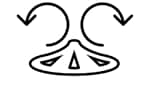
IMPELLER WASHERS
An impeller is a low-profile disc that spins, rubbing clothes against each other to clean them. Impeller washers generally use less water and have more capacity.
Learn more about the differences between agitator and impeller washers.
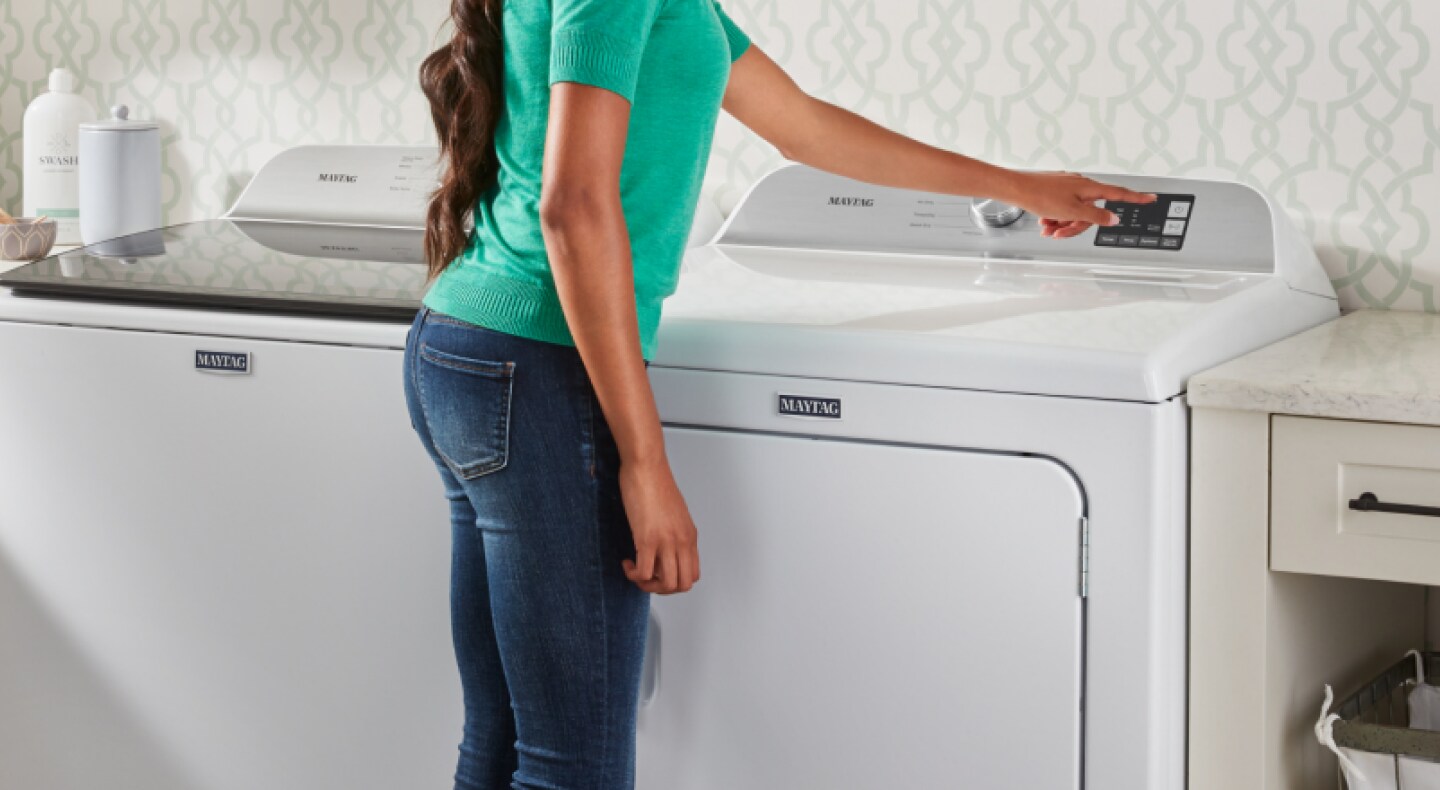
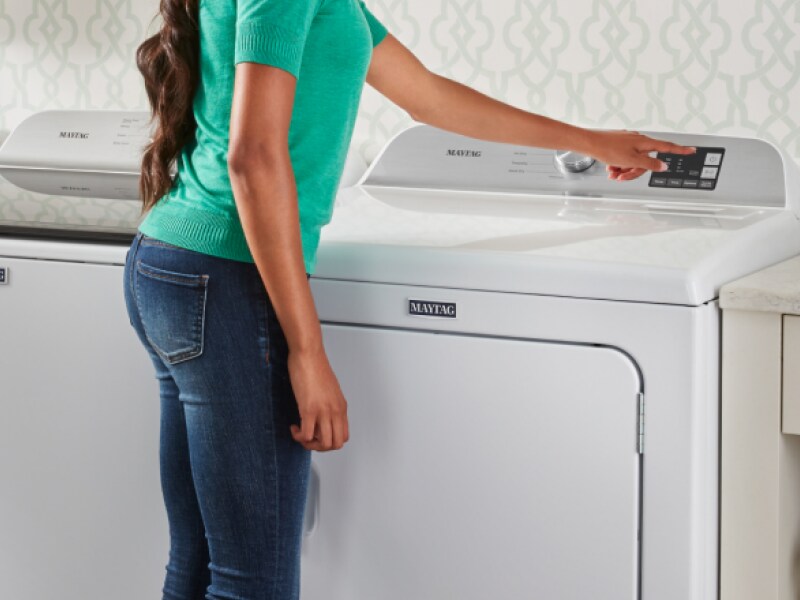
5. ELECTRIC VS. GAS DRYERS
Both gas and electric dryers can help keep laundry day running smoothly, but one option may fit better in your laundry room than the other. Compare gas and electric dryers below to find the right dryer for you.
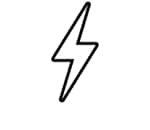
ELECTRIC DRYERS
Most spaces are set up for electric dryers, like these Maytag® options. Check for a four-pronged, 240-volt electrical outlet. Electric dryers usually cost less than gas and don’t require a dedicated gas line, but will dry a little slower.

GAS DRYERS
Gas dryers, like these models from Maytag brand, require a gas hookup for heat and use a standard 110/115-volt outlet for electricity. Total operating costs are lower due to less electricity consumption.
Learn more about the differences between electric and gas dryers or start shopping Maytag brand's best gas and electric dryers for you.
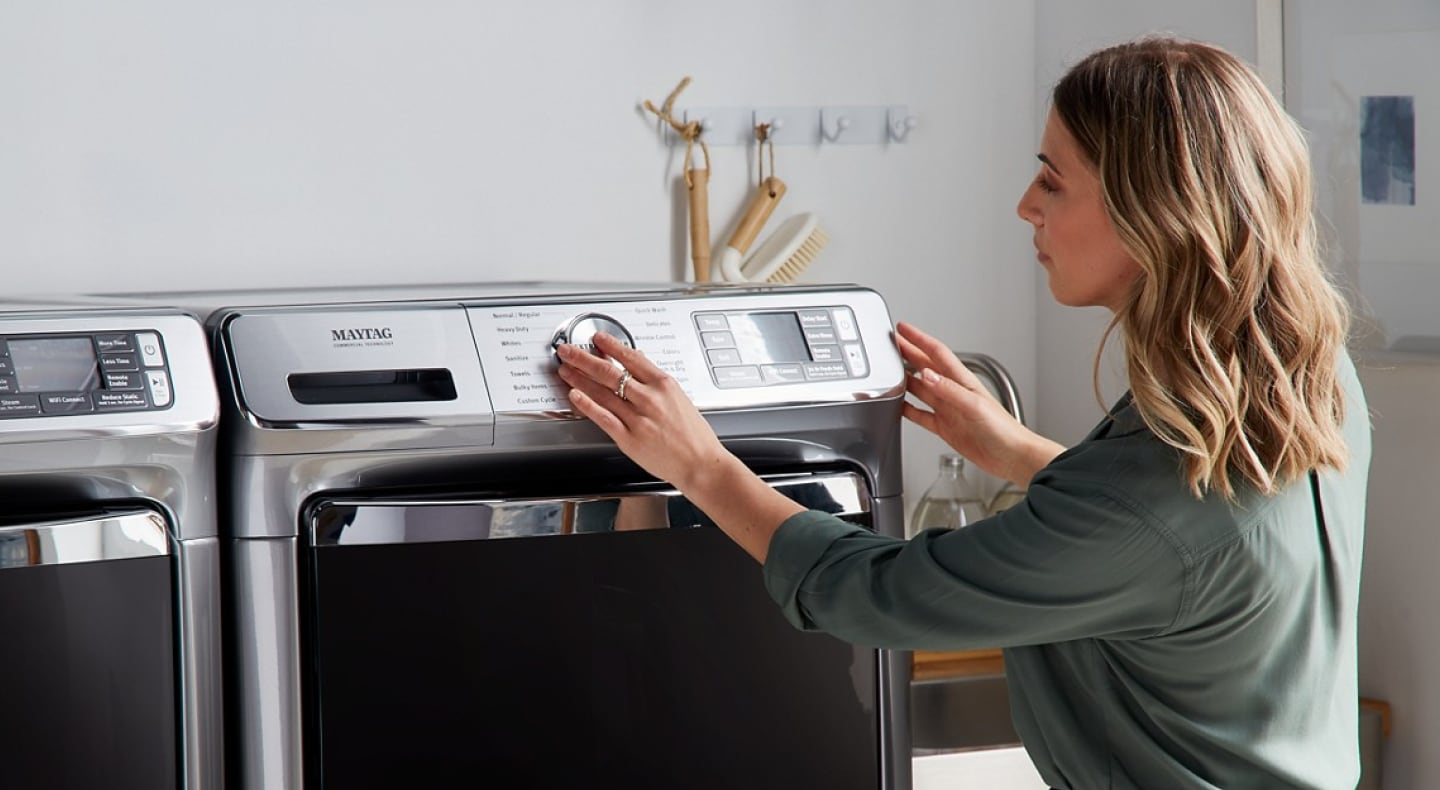
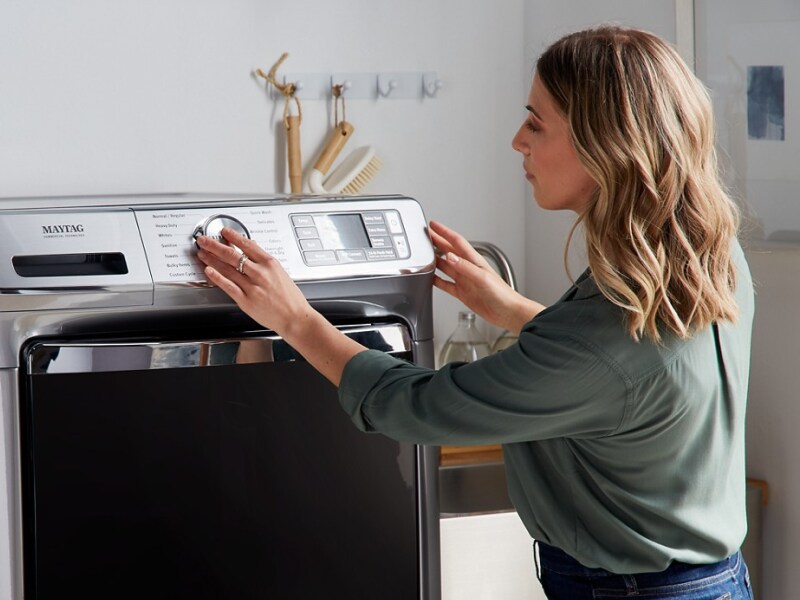
6. VENTED VS. VENTLESS DRYERS
Some types of dryers require venting to the outside, while others are ventless. Explore dryer ventilation options below.
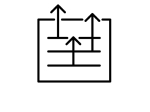
VENTED DRYERS
Vented dryers are what you see most often. They use a vent to expel hot air after it’s been circulated through clothes, then replace it with new air. They are generally less expensive than ventless ones but must be installed close enough to an exterior wall to vent outside.

VENTLESS DRYERS
Ventless dryers can be installed anywhere, making them a good option for unconventional laundry rooms. They recycle air inside the drum rather than venting it out, using either a condenser or a heat pump. Ventless dryers generally use less energy but are more costly due to added complexity.
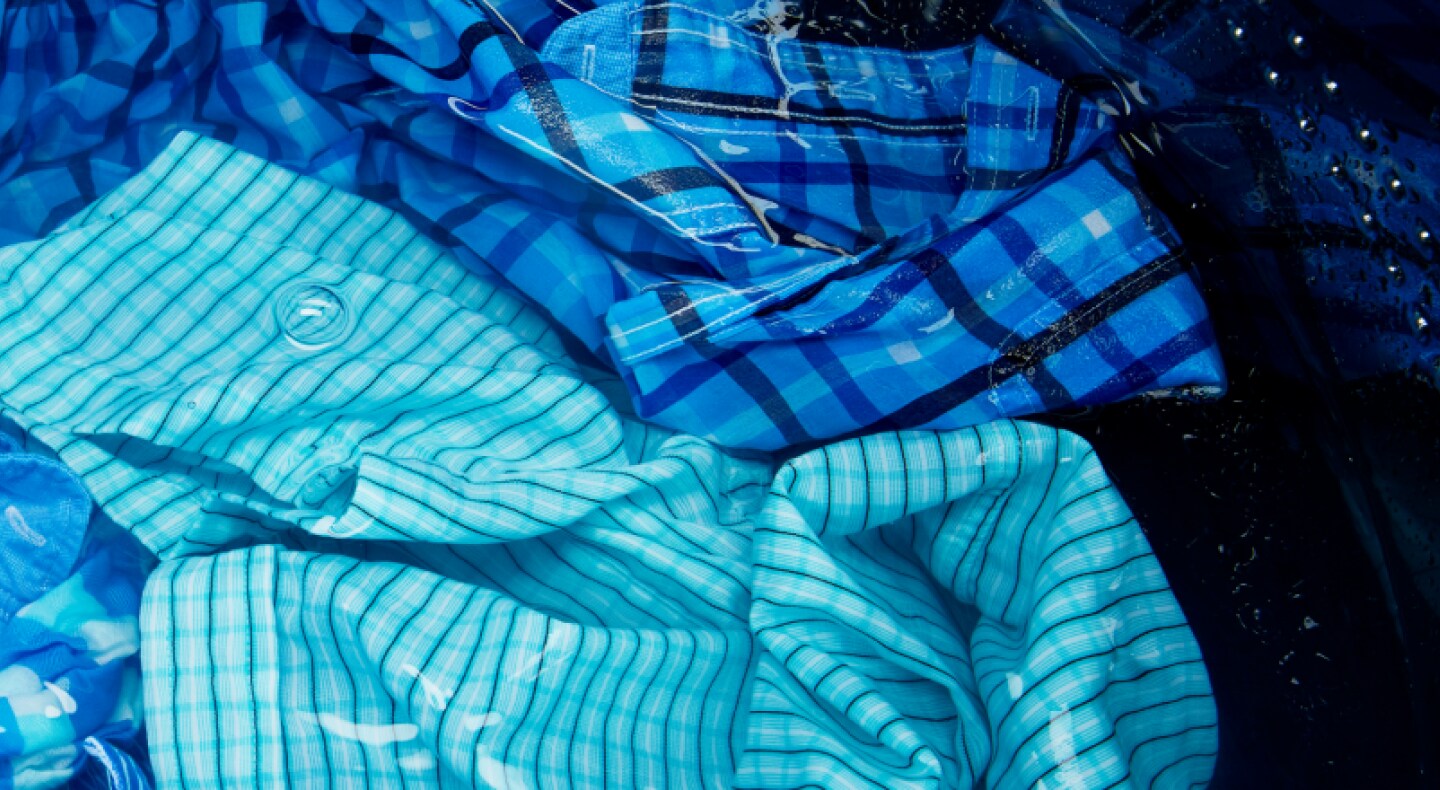
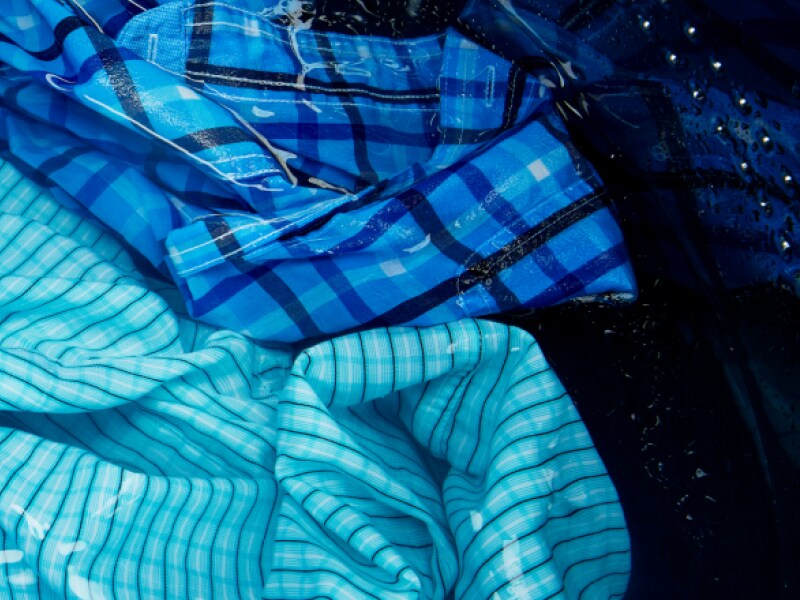
7. WATER USAGE
Washers labeled “High Efficiency” (HE) use less water than older non-HE models and are quickly becoming the standard. HE washers save 6,000 gallons of water per year for an average family, according to the U.S. Environmental Protection Agency. HE washers, like these Maytag® options, are also often ENERGY STAR® certified, which means they use less energy and cost less to operate than standard washers. They’re available as top load agitator, top load impeller and front load models. Some Maytag® washer models include features like a Deep Fill option, which allows you to control water levels and add more water when you want it.
Learn more about high efficiency washers.
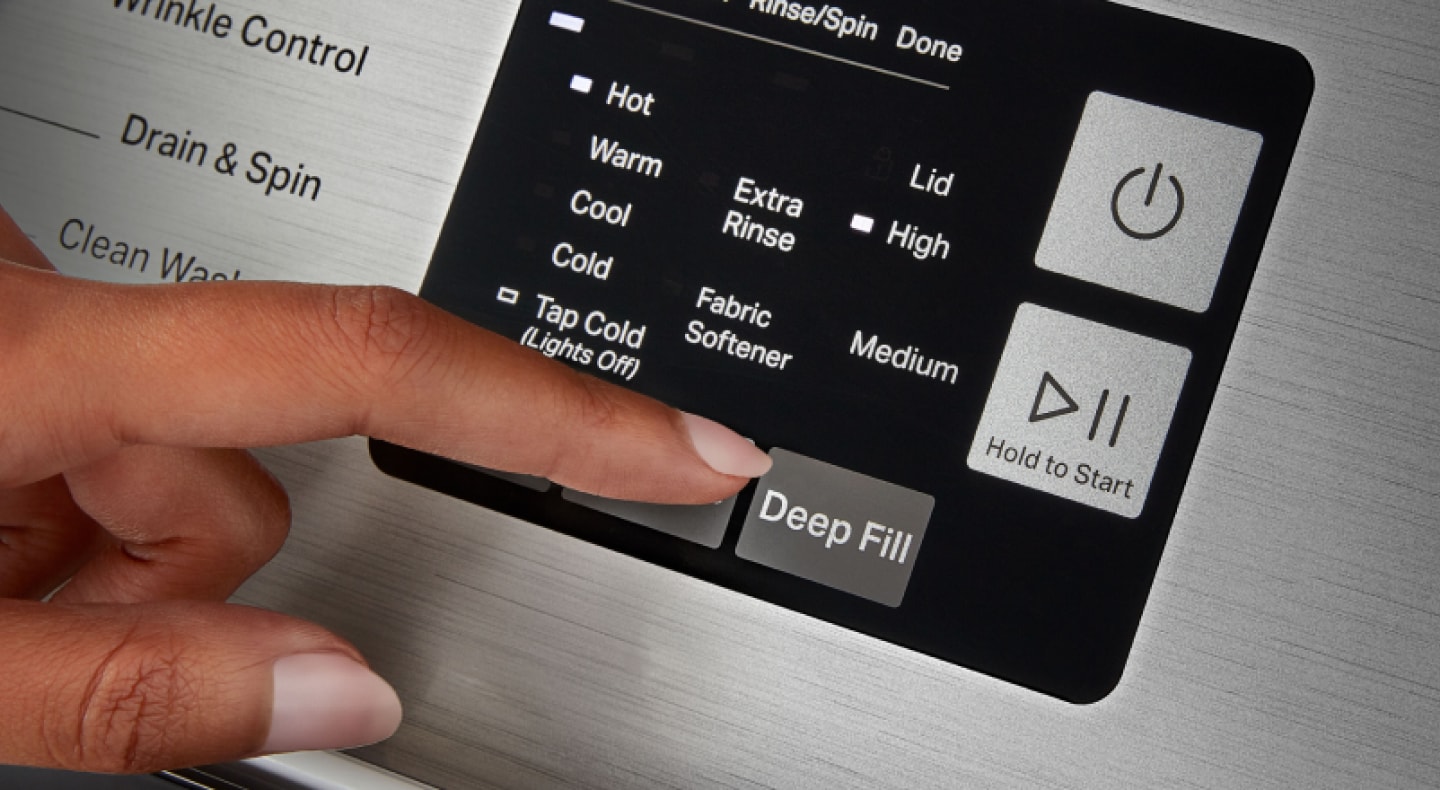
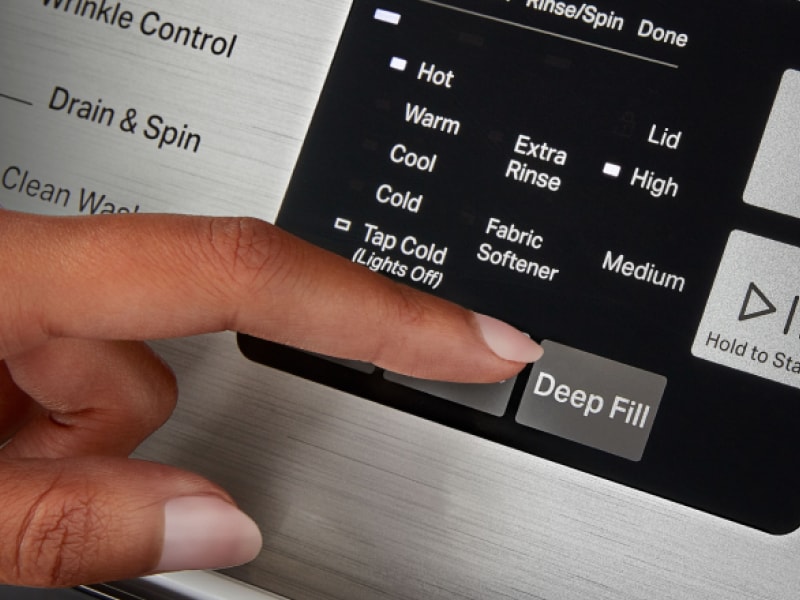
8. WASHER FEATURES
Consider what you like and don’t like about your current washer to figure out which features you might use in a new machine. Some newer features to consider are dispensers that hold large amounts of detergent and fabric softener that dispense for you or water faucets that are built right into the washer. If you know your washer will see heavy use, choose a model with commercial-grade parts that are built to last with a ½ horsepower motor. Or if you tend to forget to transfer laundry to the dryer, some models will have an option that keeps tumbling your clothes until you can unload, helping prevent odor and rewashing, such as the Fresh Hold® option by Maytag brand.
Learn more about washer settings and cycles.
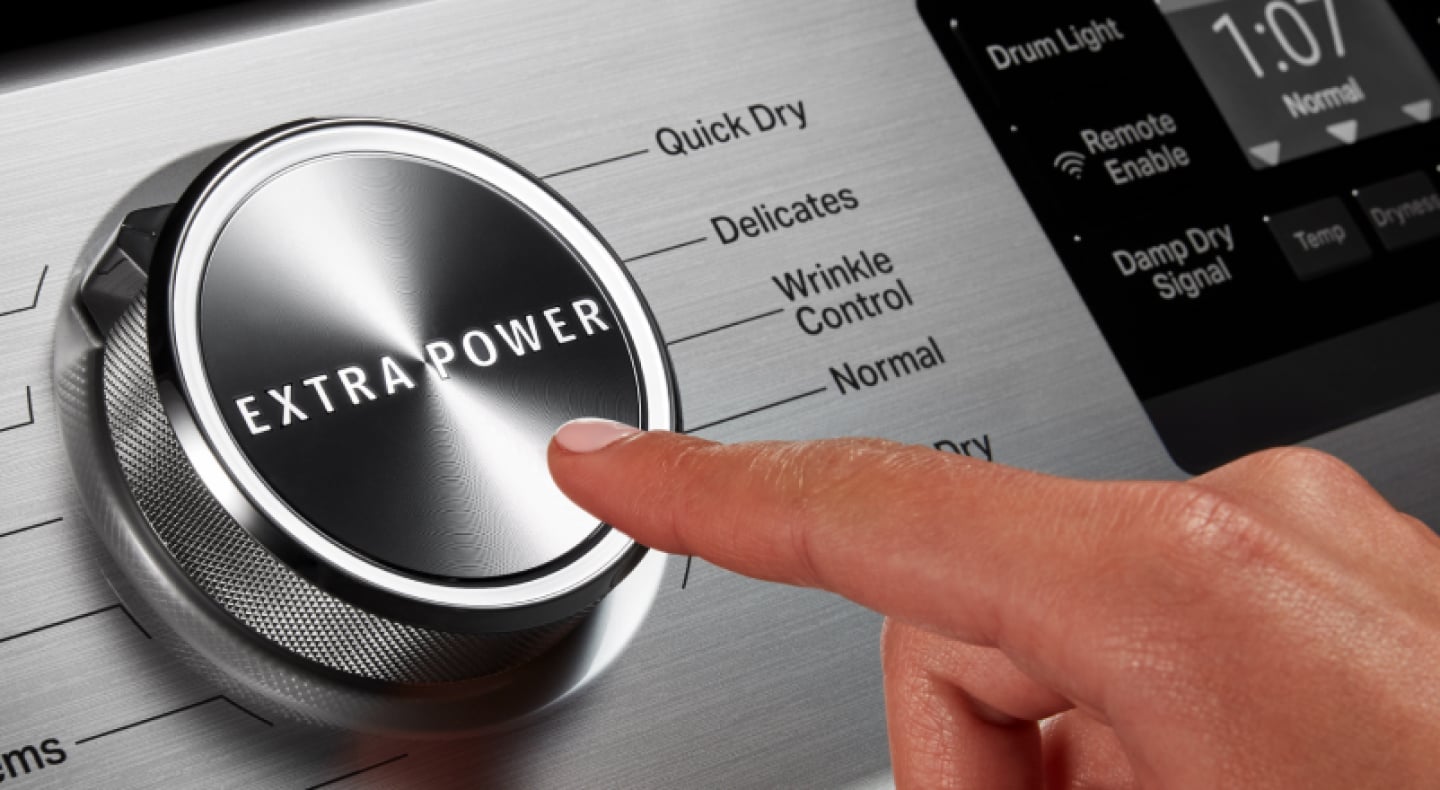
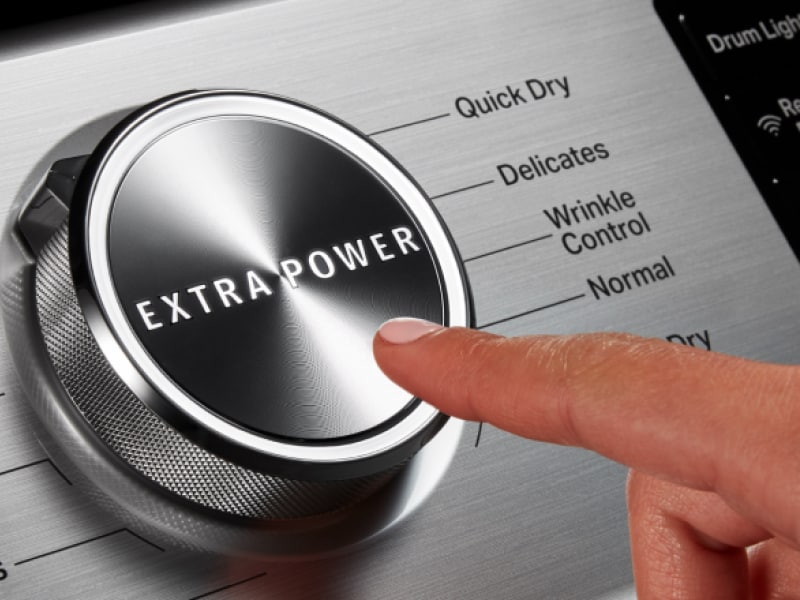
9. DRYER FEATURES
Most dryer feature upgrades tackle problems like wrinkles and over or under drying. Dryers with sensor technology stop cycles once clothes have reached the safest dry for fabrics. Wrinkle control options will tumble clothes after the cycle ends to keep wrinkles at bay, and some have steam for even more effective de-wrinkling. Commercial-grade residential dryers have thick galvanized steel panels and ultra-sturdy knobs that are designed for powerful, long-lasting strength. Take a look at your washer settings and features and see if you can find a matching dryer with consistent settings, which makes using both machines easier.
Learn more about steam dryers and view the dryer buying guide to learn more about what to consider when buying a dryer.
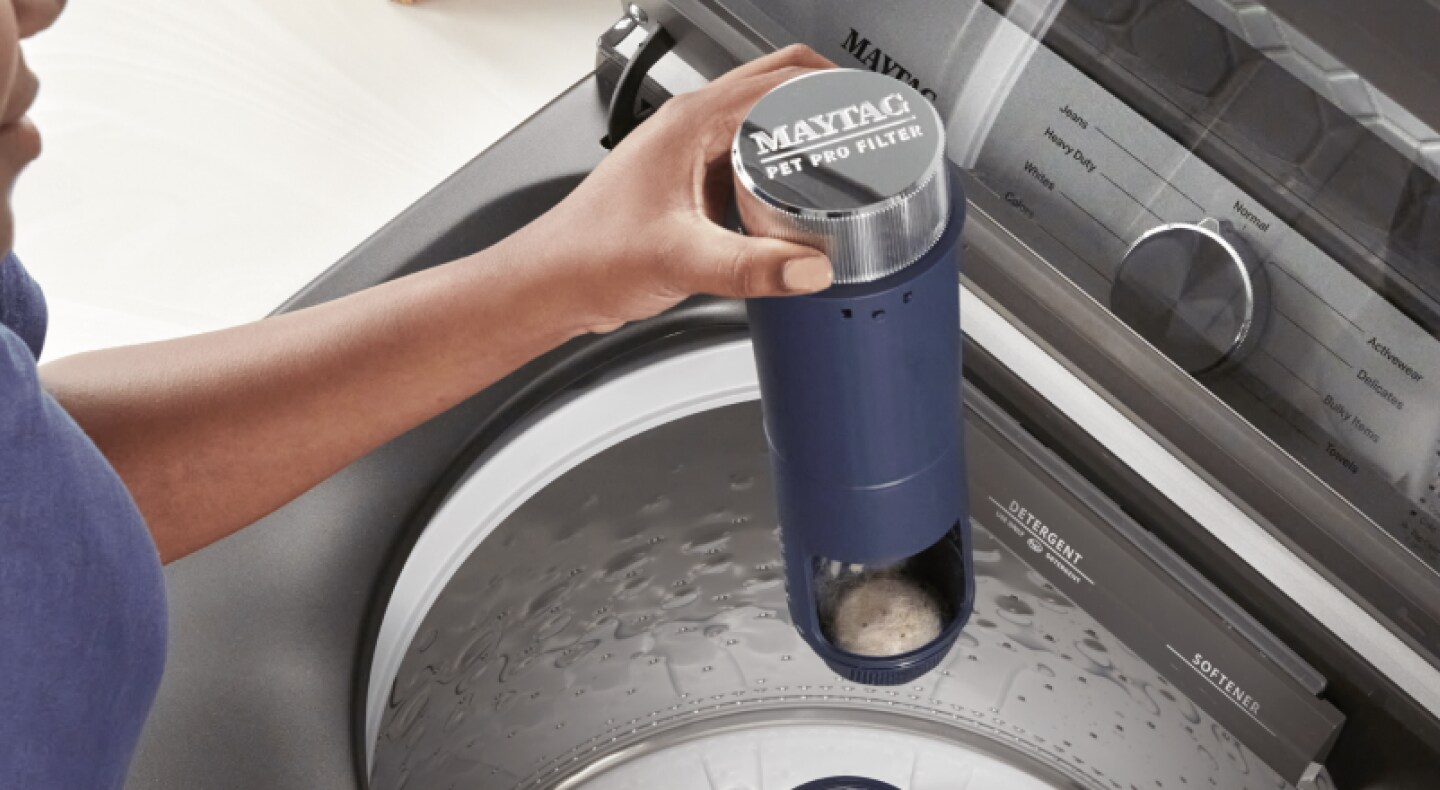
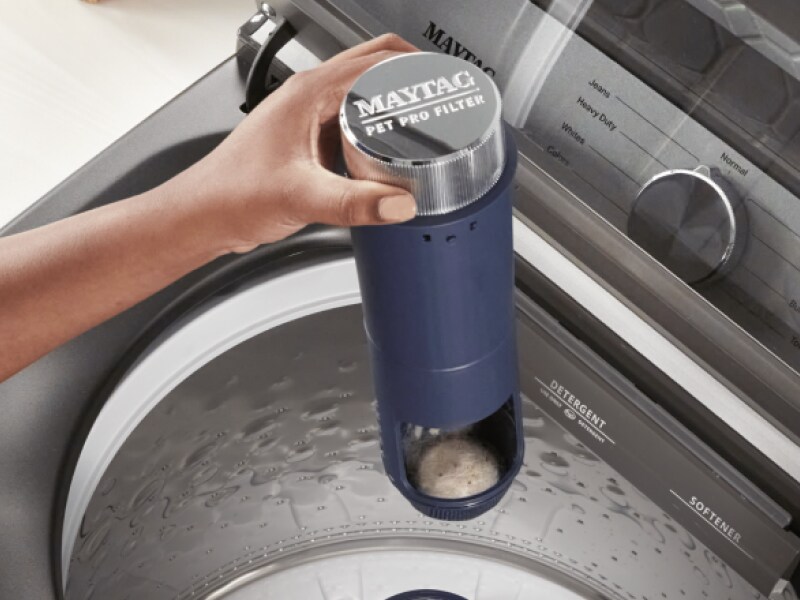
10. SOIL LEVEL AND STAINS
When you’re looking for a new washing machine, it’s important to consider the typical soil level of your laundry. If you have pets or young children, your laundry may have heavier soil levels. Some washing machines have settings for heavily soiled items like the Sanitize cycle and Deep Fill option or Quick Wash for lighter soils and stains.
Select Maytag brand washers and dryers offer the Pet Pro System with a Pet Pro filter in the washer that removes 5x more pet hair1 while the XL lint trap in the dryer traps and removes additional pet hair. And Maytag® commercial-grade residential sets are designed to bring rugged durability and high-grade performance to the home laundry room.
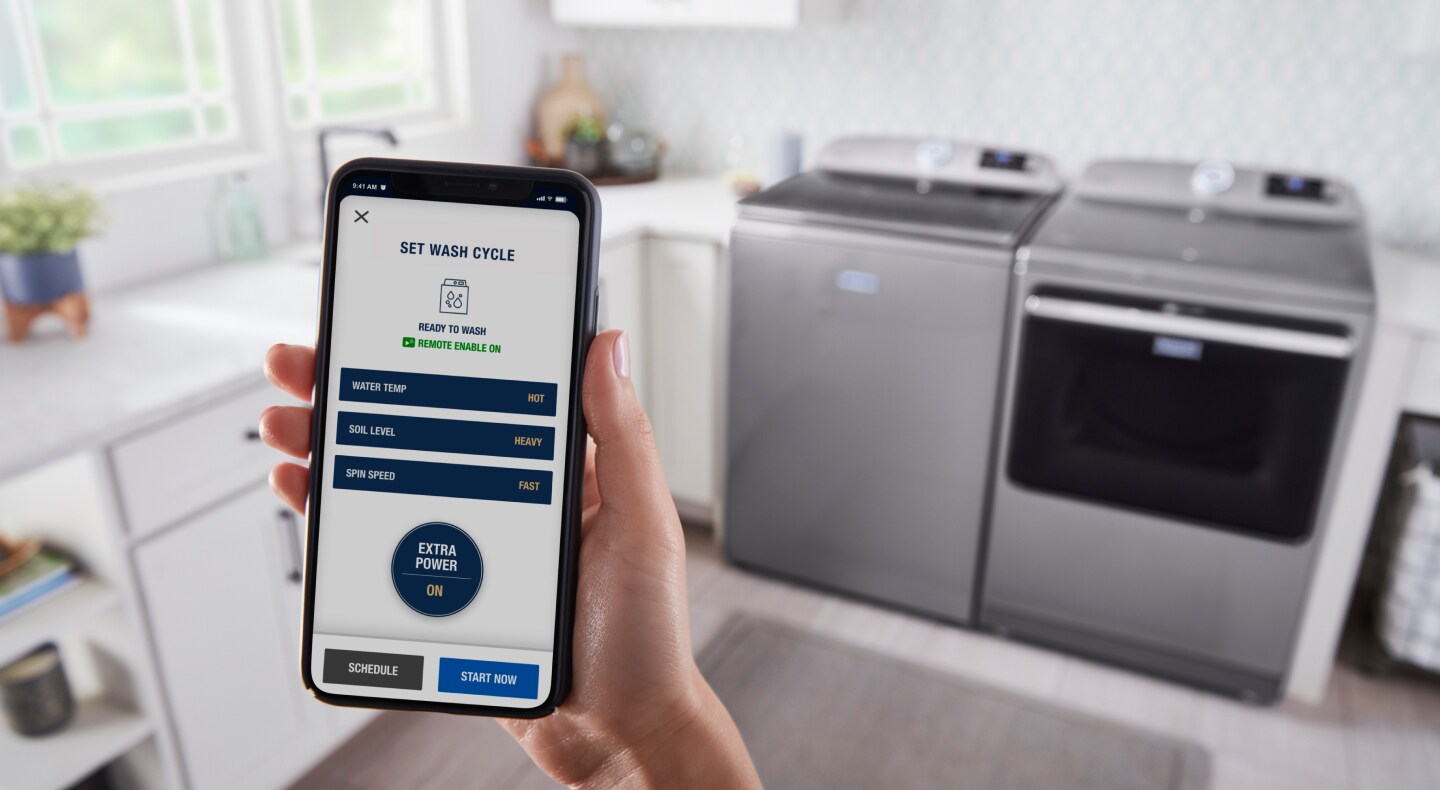
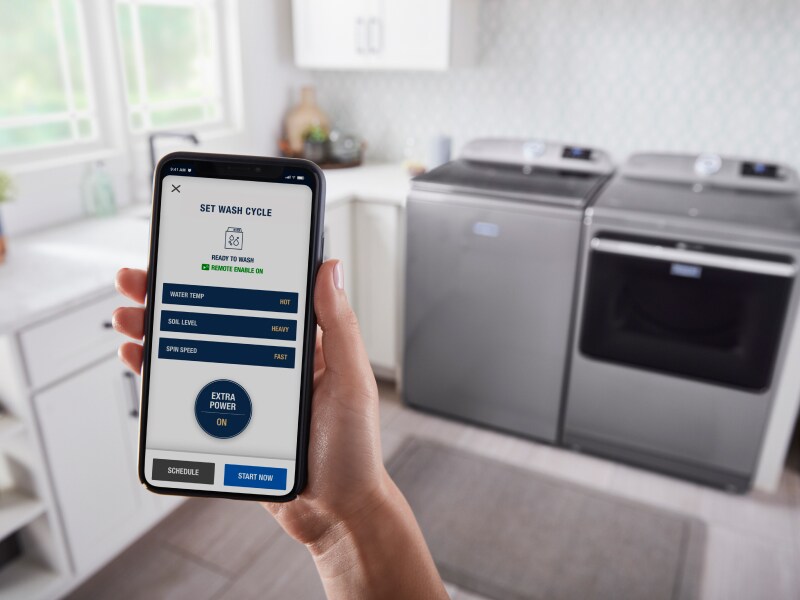
11. SMART TECHNOLOGY
Most brands offer some kind of smart-enabled washer and dryer technology that alerts you when loads are done and even lets you start a cycle from your phone. With Maytag brand, you can manage laundry from anywhere2 with these optional features and more:
Remote start allows you to start and stop laundry on your time the Maytag® app.
Custom Cycles allows you to save your favorite cycles for easy access via the Maytag® app.
Cycle notifications provide real-time alerts when your laundry cycle is complete.
Favorites allow you to save your preferred cycles for easy access via the Maytag™ app.
Learn more about Maytag® Smart Capable Laundry.
12. COLOR AND FINISH
Washers and dryers come in an array of color and finish options that can tie your laundry room decor together. If you prefer a classic and traditional look, you may want to opt for a washer and dryer in black or white. If you’re looking for a contemporary feel, a metallic style finish can make your laundry room feel modern and sleek.
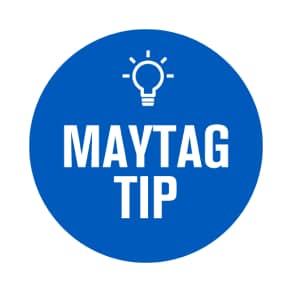
WARRANTIES
When looking for a new washer and dryer, you may also want to consider what kind of warranties are offered. Manufacturer’s warranties cover select parts of the appliances for a specific amount of time. All Maytag® appliances feature a 10-year limited parts warranty to help keep your washer and dryer running smoothly for years to come.
SHOP MAYTAG® LAUNDRY APPLIANCES
You can depend on Maytag® laundry appliances to provide a powerful clean for your laundry. Browse Maytag® commercial-grade residential options, designed for high-grade performance & rugged durability.
EXPLORE THE BIGGEST & BEST OF MAYTAG® LAUNDRY
Was this article helpful? Pass it on
1. Comparing Normal cycle with Pet Pro Filter and option to cycle using traditional agitator without Pet Pro Filter and option. Results will vary based on fabric and type of pet hair.
2. Appliance must be set to remote enable. WiFi, App & Connected Subscription required. Features subject to change. Details & privacy info at maytag.com/connect.

